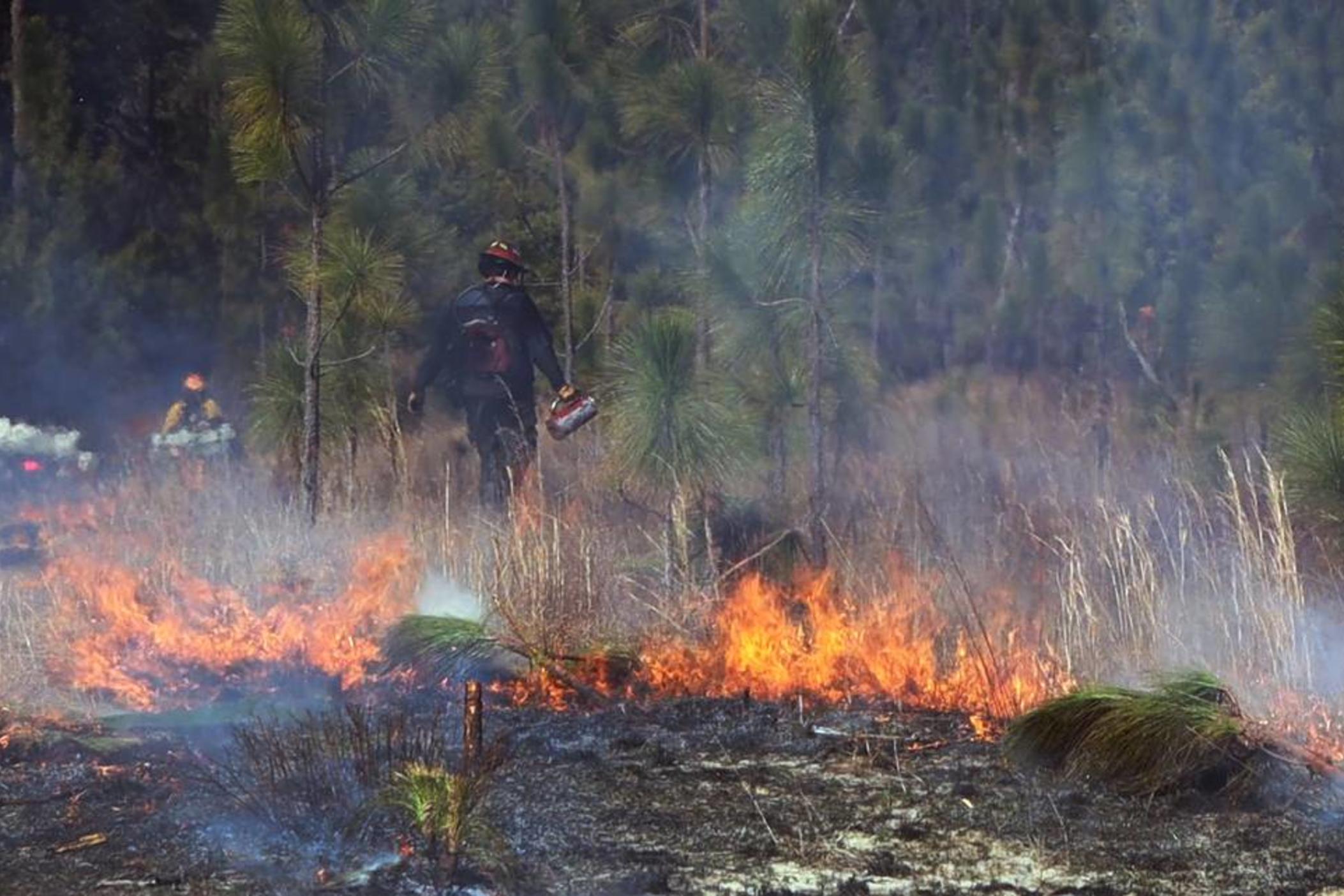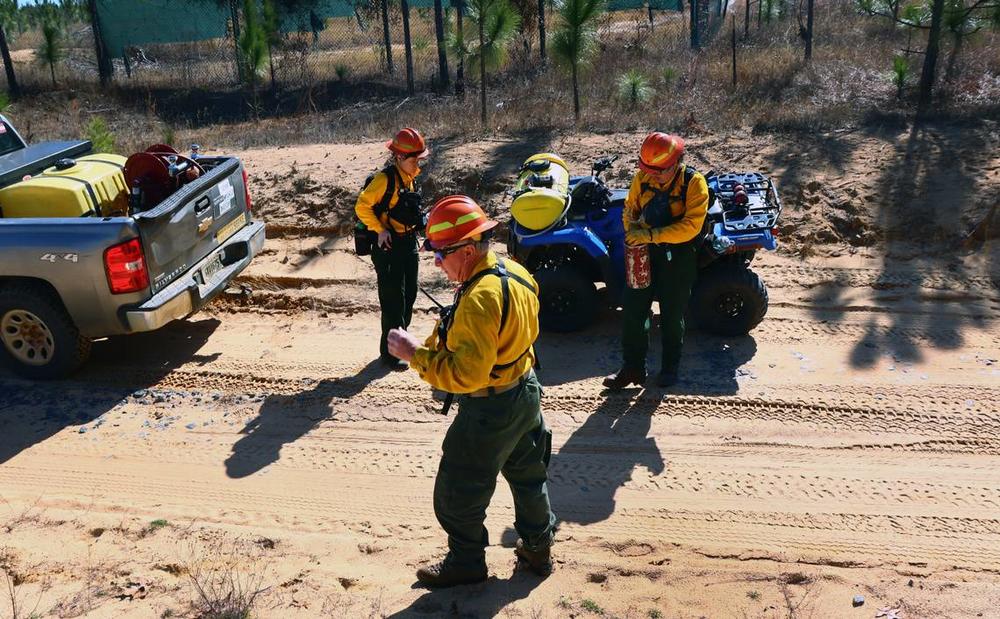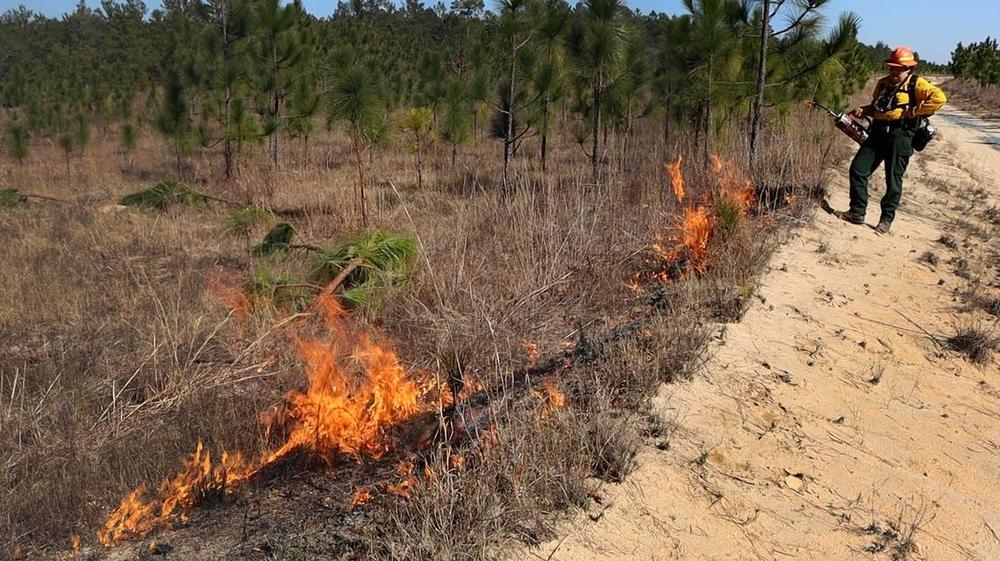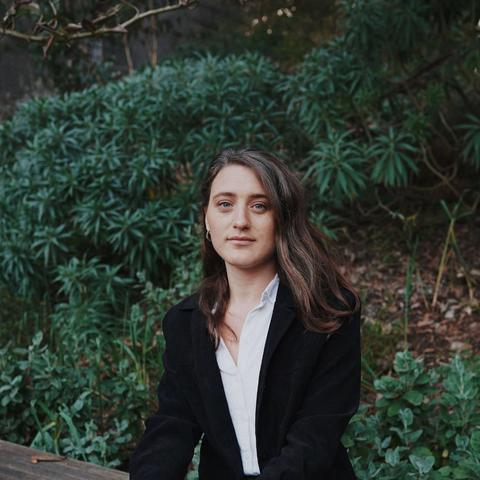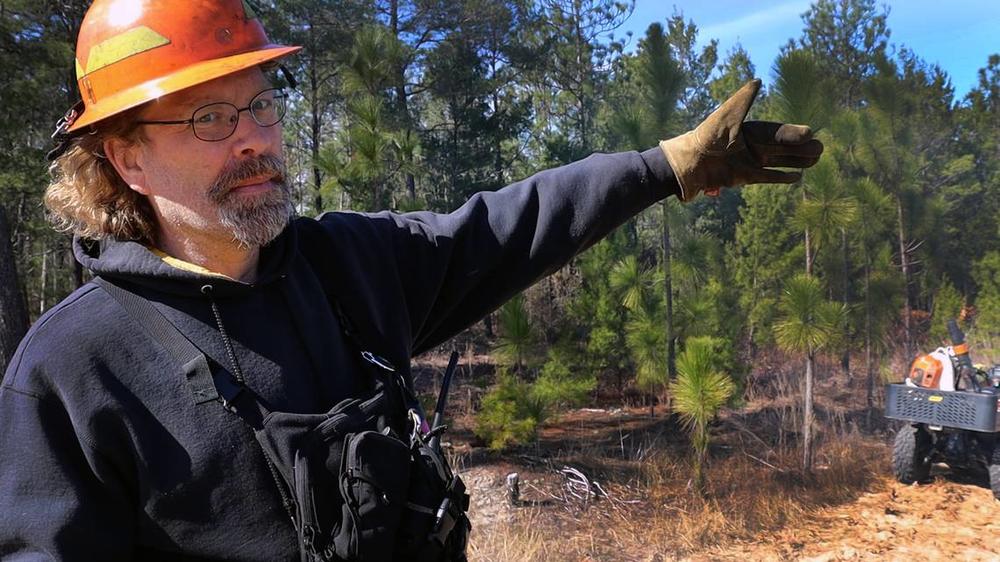
Caption
Nathan Klaus, senior wildlife biologist for the Georgia DNR, explaining the important of starting the burn on the perimeter. The native longleaf pine, behind Klaus, is thriving at Sand Hill Wildlife Management Area and protected through fire.
Credit: Kala Hunter / Ledger-Enquirer
